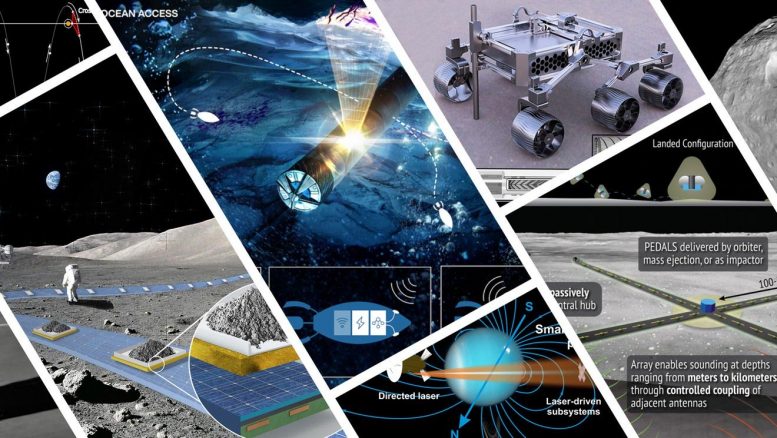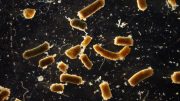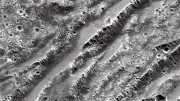
Illustrations of the projects that were selected for Phase I of the 2021 NASA Innovative Advanced Concepts (NIAC) program. Credit: NASA
Dozens of concepts are being presented at this year’s NASA Innovative Advanced Concepts Symposium, including eight led by technologists from NASA’s Jet Propulsion Laboratory.
NASA missions make it seem like the future is now – rovers exploring Mars with cutting-edge gadgets, a spacecraft venturing home with an asteroid sample, and a complex space telescope peering at the early universe. So, what’s the next big thing? What might space missions in 2050 and beyond set out to discover?
One small NASA program aims to see what could be possible. The NASA Innovative Advanced Concepts (NIAC) program, part of the agency’s Space Technology Mission Directorate, funds early-stage research into sci-fi sounding, futuristic technology concepts. The goal is to find what might work, what might not, and what exciting new ideas researchers may come up with along the way.
NASA Innovative Advanced Concepts (NIAC) is not your typical NASA program. From deep space human exploration to advanced propulsion and robotics, the NIAC program aims to change the possible by supporting early stage space technology research that could radically change the future. This video represents research studies within the NASA Innovative Advanced Concepts program. NIAC is a visionary and far-reaching aerospace program, one that has the potential to create breakthrough technologies for possible future space missions. However, such early stage technology developments may never become actual NASA missions. Credit: NASA 360
During NIAC’s annual Symposium September 21-23, 2021, researchers will present ideas that could one day be game-changers in space. Watch the event to learn more about these four technology concepts and more.
1. Swimming micro-robots for ocean worlds.
Ocean worlds, where liquid oceans lie beneath miles of icy crust, are some of the most likely locations in our solar system to harbor life – an enticing prospect for scientists. Accessing and exploring these aquatic environments present unique challenges. Ethan Schaler, a robotics mechanical engineer at NASA’s Jet Propulsion Laboratory in Southern California, is researching one promising idea for exploration: Using 3D-printed, centimeter-scale robots equipped with sensors and actuators. A mothercraft that drilled through the ice and deployed the micro-bots would also wirelessly control them using ultrasound waves.
2. Long-reach crawling and anchoring robots for Martian caves.
While swimming robots could be ideal for some destinations, others will require something with a firmer grip. Marco Pavone, an associate professor at Stanford University, is developing a potential solution. His ReachBot concept could quickly crawl through caves, using extendable booms to grasp over long distances. Its various features would allow small and lightweight robots to move around in tricky environments, such as vertical cliff walls or the rocky and uneven floors of caves on Mars.
3. Lightweight deployable structures that expand in space.
Getting extra-large spacecraft off Earth takes lots of planning, as the size of what can go to space depends on how much a rocket can fit. Multiple launches and in-space assembly have proven successful in the past, but there could be another way. Assistant professor at Carnegie Mellon University Zachary Manchester is considering ways to integrate recent advances in mechanical metamaterials into a lightweight deployable structure design. Such a structure could be launched inside a single rocket fairing and then deploy autonomously to a final size of the length of 10 football fields.
4. Seeding asteroids with fungi to create space soil.
Space habitat concepts come in all shapes and sizes. But all designs have a common challenge requiring innovative thinking: How will space travelers sustain themselves during long journeys? Jane Shevtsov, working with Trans Astronautica Corporation, offers creating soil from carbon-rich asteroid material. The fungi would physically break down the material and chemically degrade toxic substances. Similar processes take place on Earth, like oyster mushrooms cleaning up petroleum-contaminated soil. The NIAC research aims to find a way for future space habitats to have ample green space and robust agricultural systems.
The 2021 NIAC symposium kicked off on Tuesday, September 21. A keynote address by the Mars 2020 Planetary Protection Lead Moogega Cooper will air on NASA Television, the agency’s website, and the NASA app.
NASA selects NIAC proposals through a peer-review process that evaluates innovation and technical viability. All projects are still in the early stages of development, with most requiring a decade or more of technology maturation. They are not considered official NASA missions.









Be the first to comment on "NASA Innovative Advanced Concepts: Visionary Technology Could Pioneer the Future in Space"